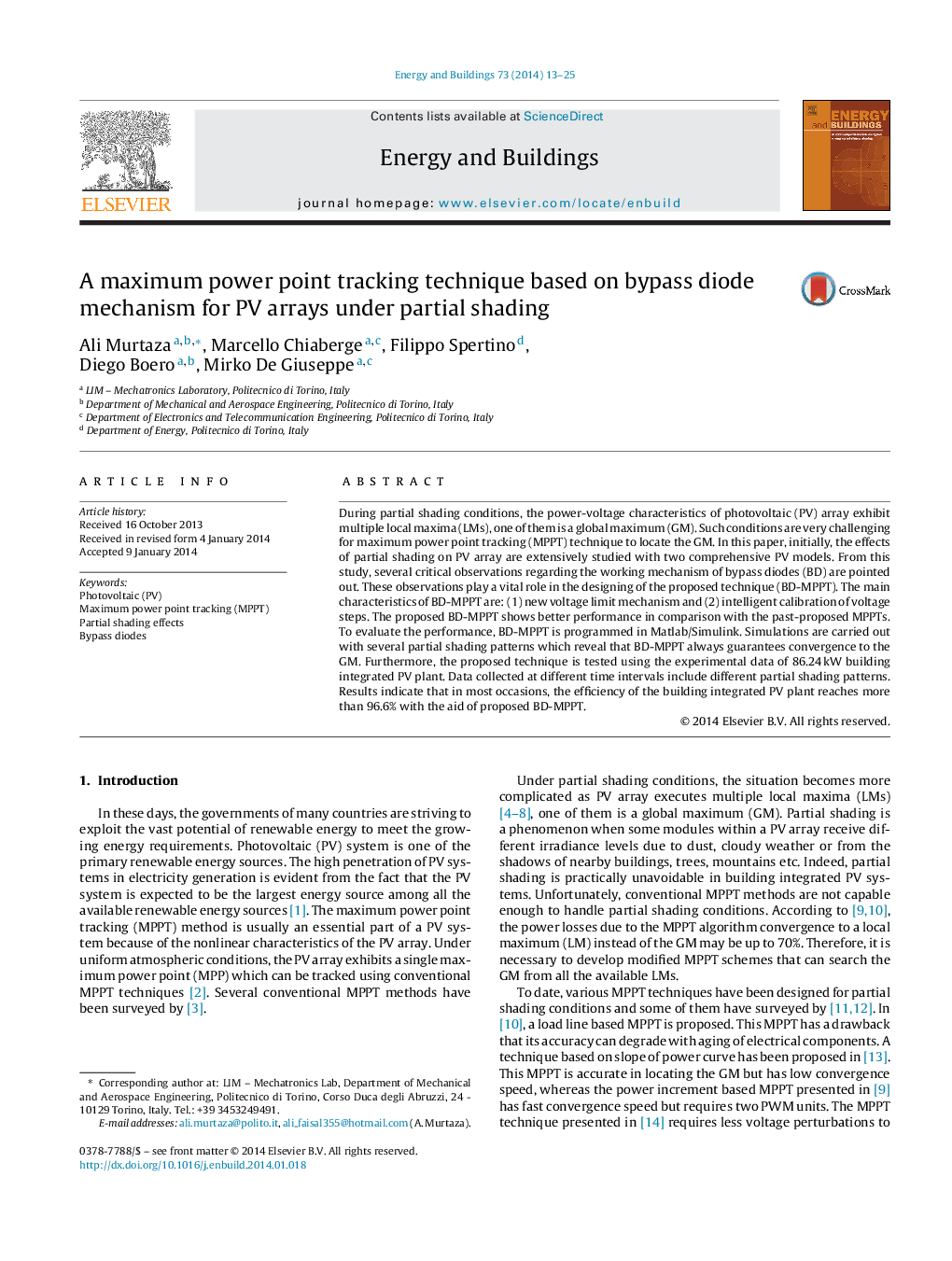| Article ID | Journal | Published Year | Pages | File Type |
|---|---|---|---|---|
| 262953 | Energy and Buildings | 2014 | 13 Pages |
•We developed a new MPPT technique for photovoltaic (PV) arrays under partial shading.•The working principle of the technique is based on bypass diode activation mechanism.•The technique can detect the global maximum under any partial shading condition with few voltage perturbations.•The proposed technique is low complex, yet has the superior tracking ability compared to the past-proposed techniques.•Experimental results show that the operational efficiency of 86.24 kW building integrated PV plant is always more than 96.6%.
During partial shading conditions, the power-voltage characteristics of photovoltaic (PV) array exhibit multiple local maxima (LMs), one of them is a global maximum (GM). Such conditions are very challenging for maximum power point tracking (MPPT) technique to locate the GM. In this paper, initially, the effects of partial shading on PV array are extensively studied with two comprehensive PV models. From this study, several critical observations regarding the working mechanism of bypass diodes (BD) are pointed out. These observations play a vital role in the designing of the proposed technique (BD-MPPT). The main characteristics of BD-MPPT are: (1) new voltage limit mechanism and (2) intelligent calibration of voltage steps. The proposed BD-MPPT shows better performance in comparison with the past-proposed MPPTs. To evaluate the performance, BD-MPPT is programmed in Matlab/Simulink. Simulations are carried out with several partial shading patterns which reveal that BD-MPPT always guarantees convergence to the GM. Furthermore, the proposed technique is tested using the experimental data of 86.24 kW building integrated PV plant. Data collected at different time intervals include different partial shading patterns. Results indicate that in most occasions, the efficiency of the building integrated PV plant reaches more than 96.6% with the aid of proposed BD-MPPT.
